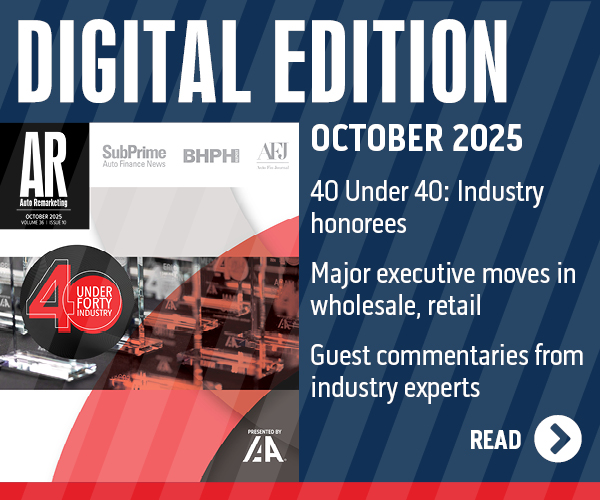Penske: Commercial Vs. Light-Vehicle Acquisitions in 2015

By subscribing, you agree to receive communications from Auto Remarketing and our partners in accordance with our Privacy Policy. We may share your information with select partners and sponsors who may contact you about their products and services. You may unsubscribe at any time.
BLOOMFIELD HILLS, Mich. –
Penske is coming off of a record breaking year, success which in part is due to its recent acquisitions.
For retail automotive, specifically, the company acquired $225 million in annualized revenues last year, including the purchase of BMW of Greenwich, Conn., with revenue of $200 million annually.
And so far in 2015, the company has already bought a Land Rover dealership in Darien, Conn., with estimated annualized revenues of approximately $50 million.
As the company ramps up acquisitions even more this year, market analysts posed a series of questions to company chairman and chief executive officer Roger S. Penske regrding whether commercial or light vehicle acquisitions would take a front seat in 2015.
During the company’s conference call to discuss full-year and quarterly results, Penske said in 2015, 50 percent of acquisitions will be on the commercial side of the business while the other 50 percent will be divided equally between the U.S. and the international light-vehicle market.
Penske has already begun to show a focus on the commercial side of the business, as it also announced this week it has renamed its U.S.-based commercial vehicle dealership business to Penske Commercial Vehicles, US, which formed Daimler exec Richard Shearing will be heading up.
Subscribe to Auto Remarketing to stay informed and stay ahead.
By subscribing, you agree to receive communications from Auto Remarketing and our partners in accordance with our Privacy Policy. We may share your information with select partners and sponsors who may contact you about their products and services. You may unsubscribe at any time.
During the call, Penske explained commercial acquisitions are often less complicated than light vehicle stores.
"To the point of commercial vehicles, what we see is lower valuations from the standpoint of commercial vehicle and acquisitions. There is no question it is 25 to 30 percent less from a goodwill percepective versus premium luxury automotive," he said.
"From the standpoint of future (capital expenditures), there is significantly less requirements from the commercial vehicle aspect that there are in some of the showrooms and things we have to deliver to the OEMs," Penske continued.
The exec also noted rent discrepancies play a large role in the company’s acquisition decisions.
“Quite honestly, the rent factors are significantly lower in these cases (commercial) where we’ve purchased these businesses and then releasing back from the operators,” Penske said.
An expanded commercial vehicle focus is also tied to increasing gross profit.
“I think another key metric there is when you look at the gross profit on the auto side if you look, our results were probably around 9 percent to 10 percent sales revenue, and parts and services with a 40-percent gross profit.
If you look at the commercial vehicle business, that gross profit is approaching 70 percent for the company.
Penske pointed out the company’s background in commercial vehicles is driven from moves made back in 1988, when it acquired Detroit Diesel from General Motors and ran that business for 13 years. Since many of the customers in the U.S. and even internationally used the company’s engines, Penske pointed out “we have a great knowledge of the customer base and relationships.”
More recent growth in the commercial side of the business stemmed from Freightliner Trucks' consolidation.
“When Freightliner decided that they wanted to consolidate their dealership group and they have 40 percent of the market, we jumped on-board there and made a couple of strategic acquisitions, and we see that is a great vertical for us as we go forward to balance our domestic and our international in with our commercial vehicle, and certainly in our knowledge of the truck business because of our big fleet makes it a positive for us as we go forward,” Penske said.
“I think overall we're going to see more pull through from the commercial vehicle side,” he noted later in the call.
And with the dealership acquisition environment being hot right now, on the commercial and light-vehicle sides of the business, Wall Street analysts also asked Penske if he would be willing to let go of any current stores or relocate capital to other locations.
“I think we're looking at that in all of our businesses and obviously things that maybe looked quite beneficial to us several years ago we might have changed our mind in certain markets. So, we'd be adding and subtracting those businesses as we go forward, but I think that we're going to stay focused on foreign name plates, volume foreign and primarily in the premium luxury (market),” Penske said.
“So I would say that the focus would be premium luxury volume foreign. Obviously, there might be some opportunities on the domestic side,” Penske added.
The chairman and CEO was also asked why the company continues to have a strong preference for import brands, rather than turning to the Big 3.
“Yes, I would say since our mix for the last 15 years has been driven towards premium/luxury and volume foreign. We missed the boat you might say on some of the larger, better acquisitions on the domestic side; we have some good GM business, some Ford business and some Chrysler business, but it is much, much smaller than the other peers on the public side. But we're talking to Chrysler, GM and Ford about opportunities, but we got to get one to have the right scale and for sure have to be in markets where we already have a footprint,” Penske concluded.
When asked if Cadillac was on the company’s radar at all for future light-vehicle store acquisitions, Penske said if the company could get Cadillac in the “right market,” they would certainly be interested because it’s a premium/luxury brand, a branch of the market the dealer group specializes in.


